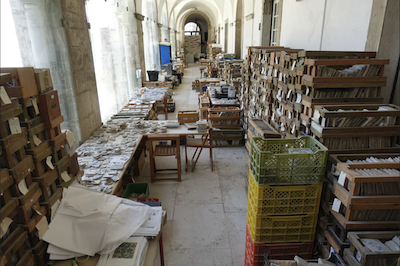Katherine Davidson is a PhD candidate in the Department of Sociology and Anthropology
On October 3rd, 2022, John Oliver aired a special on museums and colonial looting, featuring a short called “The Payback Museum”. Kumail Nanjiani takes viewers on a tour of all the places that nations would display their cultural heritage, had it not been stolen by colonizers; in their place, are artifacts that Western countries were “just leaving (…) out, letting it get wet”, including Stonehenge, the Liberty Bell and “a bunch of shit from Versailles”.
These pop culture debates about antiquities rekindle discussions about colonialism and the unjust treatment by white hegemonic nations towards countries that they invaded or colonized. As the cultural branches of these nations, museums and similar institutions – sometimes called a nation’s attic (https://www.lonelyplanet.com/articles/exploring-americas-attic-a-guide-to-the-smithsonian-institution-in-washington-dc) – are featured in these debates as both perpetrator and stakeholder.
Notably, a few antiquities are regularly omitted in discussions of the antiquities trade. In contrast to the familiar types of looted antiquities – statues, busts, sarcophagi – heritage objects that those of us in the Xlab study – human remains and expedient artifacts like coins – rarely make the cut in these debates.
But what if I told you that small artifacts like coins and lithics may be the most often traded, looted and circulated artifacts? (Paul 2018: 10-11) What if I told you that the most numerous artifacts in museum storerooms were exactly these, packed tightly into boxes, numbering in the millions?

Photo by Jan Demiralp, via Unsplash.com
The issue is that the antiquities trade can make money off of anything stolen from archaeological sites around the world, because the mechanisms for laundering antiquities are so well established (Paul 2018). And, perhaps more importantly, different price points, plus a captivating archaeological story means that, ultimately, anyone could own an artifact, if their moral compass was swayed sufficiently.
Why do people defend this practice? Artifacts do not “make a good Christmas gift”. Rather, any artifact removed from its unique archaeological context – the specific location within the site, the cultural layer it was found in, what else it was found with – loses its meaning. There is a huge difference between, say, an arrowhead (projectile point) found wedged in an animal bone, compared to one found in a cache, compared to a grave good. That knowledge is how archaeology works, and is essential for understanding the cultural heritage of a region.
Towards the end of the tour of the Payback Museum, Nanjiani takes viewers through the storage room of the museum. Taking a box of Gerald Ford’s ribs, he asks, “How long do you have to be dead for it to be okay? Huh? I’m serious. Give me a number for how long after his death it’s okay to have a part of someone’s body sweating in your museum’s hot storage.”
Yes, museums store human remains – some even display them to the public, though this practice is more common in some places than others. But some private citizens also take part in buying and selling human remains for personal consumption.
Based on extensive research on the illicit trade of human remains – from our lab (https://bonetrade.github.io/papers/), and from our colleagues (https://www.theatlantic.com/science/archive/2019/09/why-you-cant-display-your-relatives-skull/597307/) – there are ample legal and ethical red flags for anyone engaged in this practice.
Luckily, the network of heritage professionals, archaeologists and activists working to raise awareness of these illicit activities is growing by the day. I have had the privilege of learning from my colleagues since joining the Xlab in May 2020, especially @CombatLooting, @AmeliaTheArchaeologist, @CounteringCrime, @DrDonnaYates. And of course, keep following the Xlab Blog to learn about our current projects!
References:
Armstrong, Kate. “Exploring America’s Attic: A Guide to the Smithsonian Institution.” Lonely Planet. Accessed October 10, 2022. https://www.lonelyplanet.com/articles/exploring-americas-attic-a-guide-to-the-smithsonian-institution-in-washington-dc.
Doughty, Caitlin. 2019. “You Can’t Keep Your Parents’ Skulls.” The Atlantic. September 4, 2019. https://www.theatlantic.com/science/archive/2019/09/why-you-cant-display-your-relatives-skull/597307/.
Graham, Shawn and Damien Huffer. “The Bonetrade Project.” 2018. Accessed October 10, 2022. https://bonetrade.github.io/papers/.
Paul, Katie. 2018. “Ancient Artifacts vs. Digital Artifacts: New Tools for Unmasking the Sale of Illicit Antiquities on the Dark Web.” Arts 7 (2): 12. https://doi.org/10.3390/arts7020012.